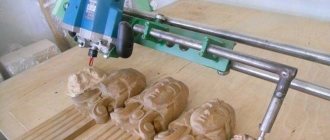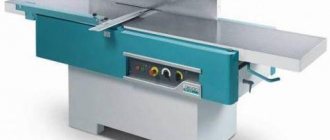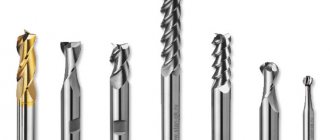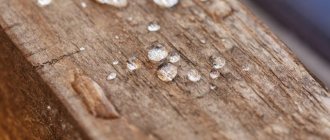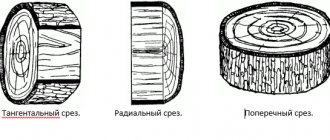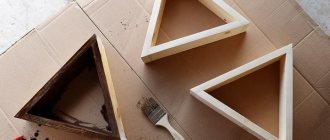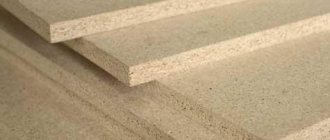Specialists who often use lathe cutters when performing metal work, as well as those who sell these products or supply machine-building enterprises, are well aware of the types of these tools. For those who rarely come across turning tools in their practice, it is quite difficult to understand their types, which are presented in a wide variety on the modern market.
Types of turning tools for metal processing
Lathe cutter design
Different types of cutters for a lathe differ in shape, the presence of additional blades, and teeth. However, the overall design remains unchanged. The equipment consists of two main elements:
- Rod. The second name is “holder”. A piece of equipment that is attached to equipment.
- Working part. The sharpened element of the cutter that comes into contact with the workpiece. Depending on the design features, the plate in contact with the workpiece may consist of many cutting edges and working planes.
When working with equipment for turning equipment, we must not forget about the importance of sharpening angles of the working part. There are three angles in total, changing which will affect the result.
Prefabricated cutters for lathes
Considering the main types of turning tools, one cannot fail to mention tools with a prefabricated structure, which are considered universal, since they can be equipped with cutting inserts for various purposes. For example, by attaching cutting inserts of various types to one holder, you can obtain cutters for processing metal workpieces at different angles on a lathe.
Prefabricated cutters
As a rule, such cutters are used on CNC machines or on special machines and are used for contour turning, boring blind and through holes and other specialized work.
The classification of cutters for turning also includes slotted, shaped and some other types. You can understand the operating principle of such tools by reading the table at the beginning of the article.
Cutter geometry
There are different types of cutters, which differ in size, shape of the holder and the number of planes on the working head. For example, the rod for securing the equipment can be round, rectangular, or square. The working element of the device is a set of surfaces:
- Cutting part.
- Vertex.
- Flat from the back.
- The plane located on the front part.
There are two types of incisors - right-handed and left-handed. The difference lies in how the cutting edge is positioned relative to the holding part.
Classification of cutters for turning
There are state standards that describe the classification of turning tools. One of the classifications is the division according to the type of processing of metal surfaces:
- Rough processing - roughing.
- Finishing.
- Carrying out high-precision operations.
- Semi-finish cleaning.
There is a division according to the type of material from which the working part of the equipment is made. A separate classification concerns the integrity of the equipment design:
- One-piece fixtures. They are accessories for lathes made from alloy steel. Models made of tool steel are rare.
- Devices with additional plates. They are made at the factory from different types of hard alloys and metals.
- Models with removable plates. They are fixed to the holder using screws. Rarely used during serial processing of metal parts.
The main classification is the division of devices into separate types according to shape and design. We need to talk about them separately.
Classification of incisors
Direct passes
Used for external processing of steel workpieces. Dimensions:
- rectangular holders - 25x16 mm;
- square holders - 25x25.
A pass-through turning cutter with a part fixed in a square-section caliper. Used when carrying out special piece operations.
Bent pass-throughs
Special equipment in which the working part is bent to the left or right. Used for trimming parts. With their help it is convenient to remove chamfers. There are three types of bent incisors:
- Training equipment - 16x10 mm.
- The most popular size is 25x16 mm.
- Custom models - 40x25 mm.
Rarely are the dimensions of the holding part 32x20, 20x12 mm.
Thrust pass-throughs
Devices come with a straight and bent working element. Designed to work with cylindrical parts. The shape plus proper sharpening allows you to quickly remove most of the excess from the working surface of the workpiece. The dimensions of the holders for thrust devices are 16x10–40x25 mm.
Bent edges
They are equipment similar to a walk-through. However, there is a difference in the shape of the cutting edge. It is triangular, which allows for better processing. The dimensions of the holding part are 16x10–32x20 mm.
Cut-off
Popular devices that are used when cutting metal workpieces. A 90 degree angle is formed at the cut site. With its help, grooves and recesses are created on parts. The cutting equipment is a holder with a fixed plate made of a hard metal alloy. The dimensions of the holding part are 16x10–40x25 mm.
Working with a cutting tool
Threading machines for external threads
These devices are used when you need to make threads on the outside of metal workpieces. The instrument consists of a holding part with spear-shaped plates attached to it.
Threading machines for internal threads
The devices are used for cutting threads in drilled holes. The device consists of a holding element with a square section. The depth to which the thread can be cut depends on its size. To use threading tools, a guitar must be installed on the industrial equipment.
Boring for blind holes
Boring tools are equipped with a working part bent on its side. A cutting triangular plate is soldered on top. The size of the hole that needs to be bored depends on how much the length of the part fixed in the caliper changes.
Boring machines for through holes
This is equipment for industrial equipment. It is used for boring holes created by drilling. The depth of machining of the holes depends on the length of the part fixed in the caliper. The element with the cutting edge has a bent head. The thickness of the material removed by the cutting edge is almost equal to the bend. The maximum length of the holding part is 300 mm.
Boring turning tools
Prefabricated
Perform various technological operations. The design allows you to attach different carbide inserts to the holder. The presence of several working elements allows you to increase the versatility of the device. The cutters, which are assembled from different plates, are fixed in the spindles of equipment controlled by a CNC system. Using prefabricated devices, holes are machined, contours are made, and grooves are selected.
Tool Features
The design of a metal-cutting turning tool consists of 2 parts: a cutting head and a holder, with the help of which it is fixed in the machine seat. The head is the main cutting element. Its main components are edges sharpened at different angles. The method for removing layers of material from the product being cut depends on the sharpening angle.
All existing cutters have design differences. When selecting them, you need to take into account a significant criterion - what kind of surface needs to be processed and ultimately obtained. All KAMI products have been certified for compliance with domestic GOST and the international quality standard ISO 5608.
Rules for sharpening metal cutters for a lathe
Sharpening turning tools is a responsible procedure. When carrying it out, you need to take into account the features of the equipment and material. Sharpening of a working tool is carried out in three stages:
- The rear part is cut at an angle that is identical to the rear angle of the holding element of the device.
- Next they work with the back of the working head.
- The final stage is adjusting the angle to the desired position.
You can sharpen in three ways:
- Using an abrasive wheel.
- By coating the surface to be sharpened with chemicals.
- Using specialized equipment.
In order not to spoil the cutting element of the device, to make it more durable, you need to take into account a number of rules:
- Do not attempt to sharpen the edge using a sharpening stone. It is extremely difficult to make the desired angle with hand tools. The heat that occurs during friction degrades the performance of the tool's working head.
- It is preferable to sharpen the cutting edge using a cooling system.
- Before you start sharpening with an abrasive wheel, you need to check it. It should be smooth, without chips or cracks. During torsion, the disk should not deviate to the sides. This can cause equipment breakdown and damage to the cutting edge.
- It is forbidden to hold the cutter suspended. To do this, you need to use a special emphasis. It is installed at a distance of 5 mm from the abrasive wheel.
- To avoid overheating of the material during rotation of the wheel, do not press the equipment against the abrasive. Effort should be minimal.
- When working, you need to wear safety glasses to protect your eyes from metal shavings.
- You cannot sharpen disposable models made in the form of plates.
- The best option when choosing the type of abrasive to coat the grinding wheel is carborundum. It is a green abrasive crumb. This material is suitable for sharpening carbide inserts. Carbon steels need to be sharpened with corundum wheels.
- Do not quickly cool the cutter after sharpening. This will lead to damage to the integrity of the metal.
- Change sharpening stones periodically.
We must not forget about fine-tuning the equipment.
This technological operation allows you to get rid of chips, microcracks, and unevenness on the blade. To carry out finishing, special equipment is used, on which diamond-coated wheels are fixed. The cutter is clamped in a vice, which is moved to the grinding wheel using a handle. Using a flywheel, bring the cutting edge to the finishing state. Lathe cutters are essential for industrial equipment. The type of equipment determines what result will be obtained and what technological operations will be available. Since cutting tools quickly become dull, we must not forget about sharpening. An incorrectly processed cutting edge will lead to defective surface of the processed material.
Recommendations
If sharpening is carried out on a grinding machine, you must first check the condition of the wheel. If the work is done manually, then you need to hold it correctly.
To prevent the instrument from overheating to a critical state, it must be constantly cooled. Water is used for this. This action is necessary to prevent the appearance of small cracks that arise due to too high thermal loads.
How often tools need to be sharpened depends on the conditions in which they are used. But this must be done so that work on lathes is more efficient and fruitful. To create the required shape, cutters of a certain type are used, since they all have their own characteristics and purpose.

